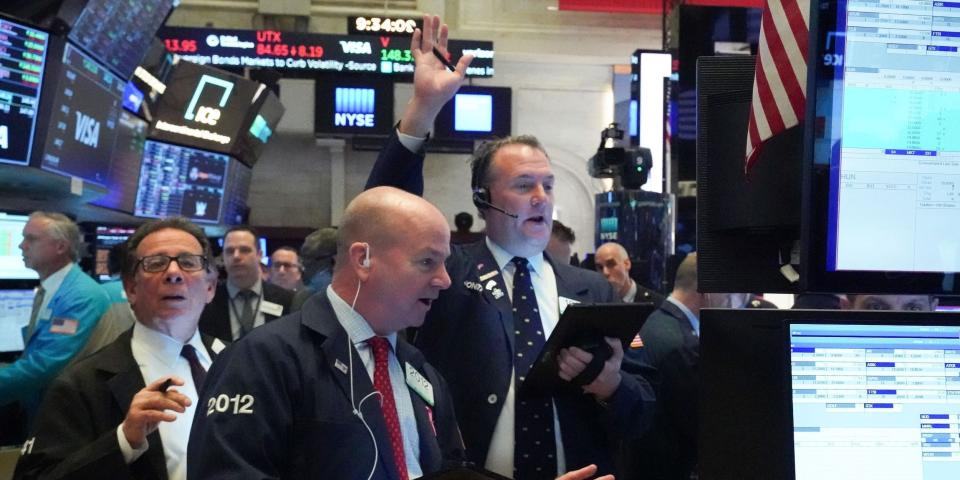The stock market rally has room to run into year-end as growth stocks benefit from falling bond yields, JPMorgan says

The rally in growth stocks isn't over, and that should drive a continued stock market rally into year-end, according to JPMorgan.
The bank said the key to growth stocks continuing to outperform is a decline in long-term bond yields.
"We think that the tactical rebound in growth has some more legs, as bond yields are likely to stay stuck," JPMorgan said.
The current stock market rally has more room to run into year-end, and it will be driven by the ongoing surge in growth stocks, JPMorgan said in a Monday note.
The firm has been recommending a tactical overweight to growth stocks over value stocks, and it sees no reason to change its view as long as bond yields continue to fall lower, or at least remain subdued.
"We think that the tactical rebound in growth style has some more legs, as bond yields are likely to stay stuck," JPMorgan's Mislav Matejka said, adding that a 100 basis point decline in long-term bond yields was the initial catalyst for the recent surge in growth stocks.
The reason bond yields are unlikely to move decisively higher in the near-term is because the gap between inflation expectations and bond yields has tightened. "This will act to constrain bond yields in the near term," JPMorgan said
For value stocks to start outperforming again relative to growth, a few things need to happen, according to the note.
1. A re-steepening of the 10-year/20-year yield curve.
"The US 10y-2y yield curve is outright inverted at present. We think that one should not switch back into value before the yield curve starts re-steepening," Matejka said. "Curve steepening is usually needed for a number of value sectors to lead, including financials."
A re-steepening of the yield curve would entail long-term yields rising and short-term yields falling, so that longer-term bond yields are more than short-term yields.
2. Strong economic data.
"Stronger economic data is generally favorable for value sectors including financials. We don't see the macro data turning stronger before Q4," Matejka said.
3. Solid momentum in China activity.
"We would need to see stronger China momentum, as most value sectors are linked to China activity. Chinese M1 and credit impulse has turned higher, but that is yet to translate into better PMIs," Matejka said. Recent data showed China's economy experienced a surprise slowdown in July.
With no signs of the above three factors changing anytime soon, now is not the time to ditch growth stocks, according to JPMorgan, as the beaten down sectors still have room for more upside into year-end and can drive the stock market higher.
And if value stocks do regain their footing against growth stocks, that doesn't mean the stock market is bound for another decline, as value stocks recently outperformed during the initial market sell-off. Instead, Matejka sees potential for value stocks to outperform growth amid a broader up move in the market.
"We think that value leadership in a down market is more of an anomaly, rather than [the] norm...if the growth-policy tradeoff improves towards year end, value could again lead, but this time in an up market," Matejka concluded.
Read the original article on Business Insider

 Yahoo Finance
Yahoo Finance 